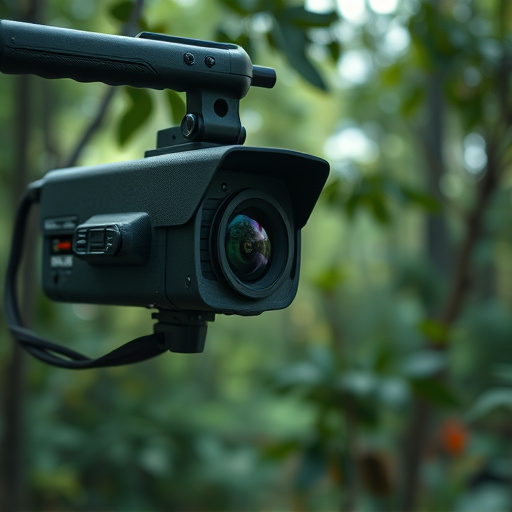Hidden recording devices disguised as everyday items pose significant privacy risks in domestic settings, especially during babysitting. To combat this, parents can employ non-invasive scanning techniques like thermal imaging and RF signal analysis to detect these concealed cameras. Advanced signal detection methods using modern technologies offer robust security for children's safety while raising ethical and legal considerations regarding privacy rights. Adhering to local laws, informed consent, secure data storage, and limited access are essential when employing concealed camera alternatives for babysitter monitoring.
Uncovering hidden recording devices has become a critical concern in today’s digital age, especially for parents seeking peace of mind with concealed cameras for babysitter monitoring. This comprehensive guide delves into the world of hidden recording device signal scanning methods, exploring both non-invasive techniques to detect concealed cameras and advanced signal detection strategies. We’ll navigate ethical considerations and legal aspects, ensuring informed decisions regarding privacy and surveillance.
- Understanding Hidden Recording Devices: A Comprehensive Overview
- Non-Invasive Scanning Techniques for Concealed Cameras
- Advanced Signal Detection Methods for Babysitter Monitoring
- Ethical Considerations and Legal Aspects of Using Hidden Cameras
Understanding Hidden Recording Devices: A Comprehensive Overview
Hidden recording devices, also known as concealed cameras or surveillance equipment, are becoming increasingly sophisticated and smaller in form factor. This technology raises significant privacy concerns, especially when used for monitoring purposes like babysitting. Understanding how these devices operate is crucial for both consumers and authorities looking to regulate their use.
Concealed cameras for babysitter monitoring, for instance, may be disguised as everyday items like toys, smoke detectors, or even children’s books. They can record audio and video secretly, capturing intimate moments that should remain private. Detecting these devices requires specialized equipment and knowledge of signal scanning methods. Advanced techniques involve analyzing radio frequency (RF) signals, infrared (IR) emissions, and visual clues to pinpoint hidden cameras and microphones. By staying informed about these scanning methods, parents can better protect their homes and families from potential privacy breaches associated with concealed recording devices.
Non-Invasive Scanning Techniques for Concealed Cameras
In recent years, non-invasive scanning techniques have emerged as a significant development in the field of hidden recording device detection. These methods are particularly relevant when it comes to Concealed Cameras for Babysitter Monitoring, ensuring privacy and safety without causing any distress to those being observed. Technologies like thermal imaging and radio frequency (RF) signal analysis offer sophisticated yet discreet ways to locate hidden cameras.
Thermal imaging leverages temperature differences to reveal the heat signature of electronic devices, allowing professionals to detect even small or remotely placed sensors. RF signal scanning, on the other hand, identifies unusual electromagnetic emissions, which can indicate the presence of covert recording equipment. These non-invasive methods are invaluable in various scenarios, including home security, workplace surveillance, and, as mentioned, babysitter monitoring, providing peace of mind without compromising privacy.
Advanced Signal Detection Methods for Babysitter Monitoring
In the realm of babysitter monitoring, advanced signal detection methods employing concealed cameras offer unprecedented levels of security and peace of mind for parents. These innovative techniques go beyond traditional hidden camera setups by incorporating sophisticated signal scanning technologies. By analyzing audio and visual data in real-time, these systems can detect subtle changes in the environment or unusual behavior, alerting caregivers and parents instantaneously. This proactive approach ensures that any potential issues are addressed promptly, enhancing the overall safety of children under their supervision.
One such method involves the use of direction finding techniques to pinpoint the location of concealed cameras. By scanning for specific signal strengths and directions, these systems can determine if a camera is active and its approximate position. Additionally, advanced algorithms can identify unusual patterns in audio signals, potentially indicating hidden microphones or other recording devices. This dual-pronged approach—combining location tracking and sound analysis—provides a robust framework for comprehensive babysitter monitoring, leveraging the power of modern signal scanning technologies to safeguard young ones.
Ethical Considerations and Legal Aspects of Using Hidden Cameras
The use of concealed cameras, often employed for babysitter monitoring or home security purposes, raises significant ethical and legal questions. While these devices can provide valuable evidence in certain situations, they also infringe on privacy rights. In many jurisdictions, there are strict regulations governing the installation and use of hidden cameras, especially within private residences.
Parents considering Concealed Cameras for Babysitter Monitoring must be aware of local laws and respect the privacy expectations of all individuals involved. It’s crucial to obtain informed consent from the babysitter (and potentially other household members) and to ensure that any recorded footage is securely stored and accessed only by authorized persons, adhering to data protection guidelines.
Hidden recording devices, especially in domestic settings like babysitter monitoring, raise ethical and legal questions that must be carefully considered. While non-invasive scanning techniques offer valuable solutions, advanced signal detection methods further enhance privacy protection. In the context of Concealed Cameras for Babysitter Monitoring, it’s crucial to balance security needs with individual rights. As technology advances, staying informed about both innovative scanning methods and evolving legal frameworks is essential to ensuring a safe yet respectful environment.
